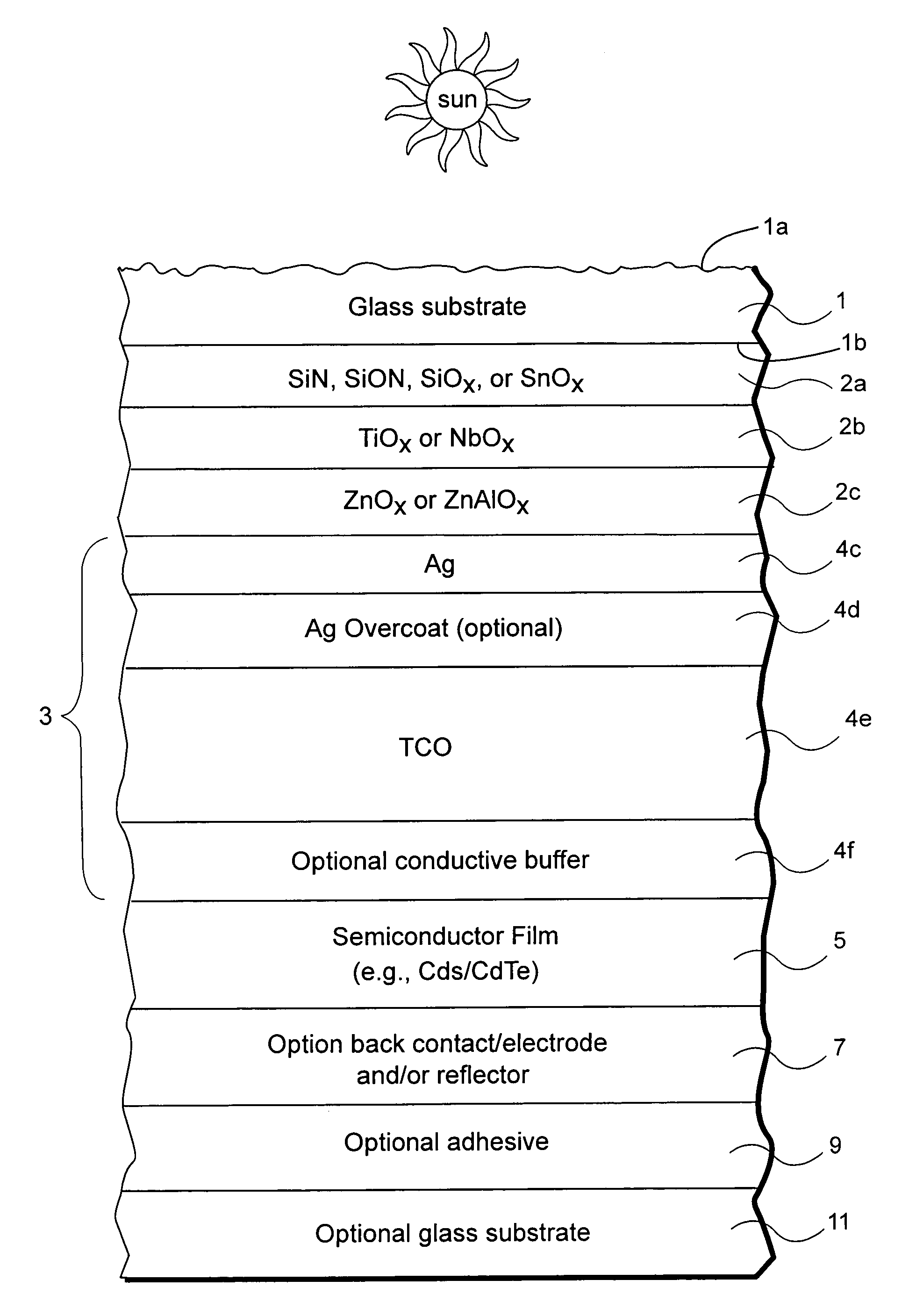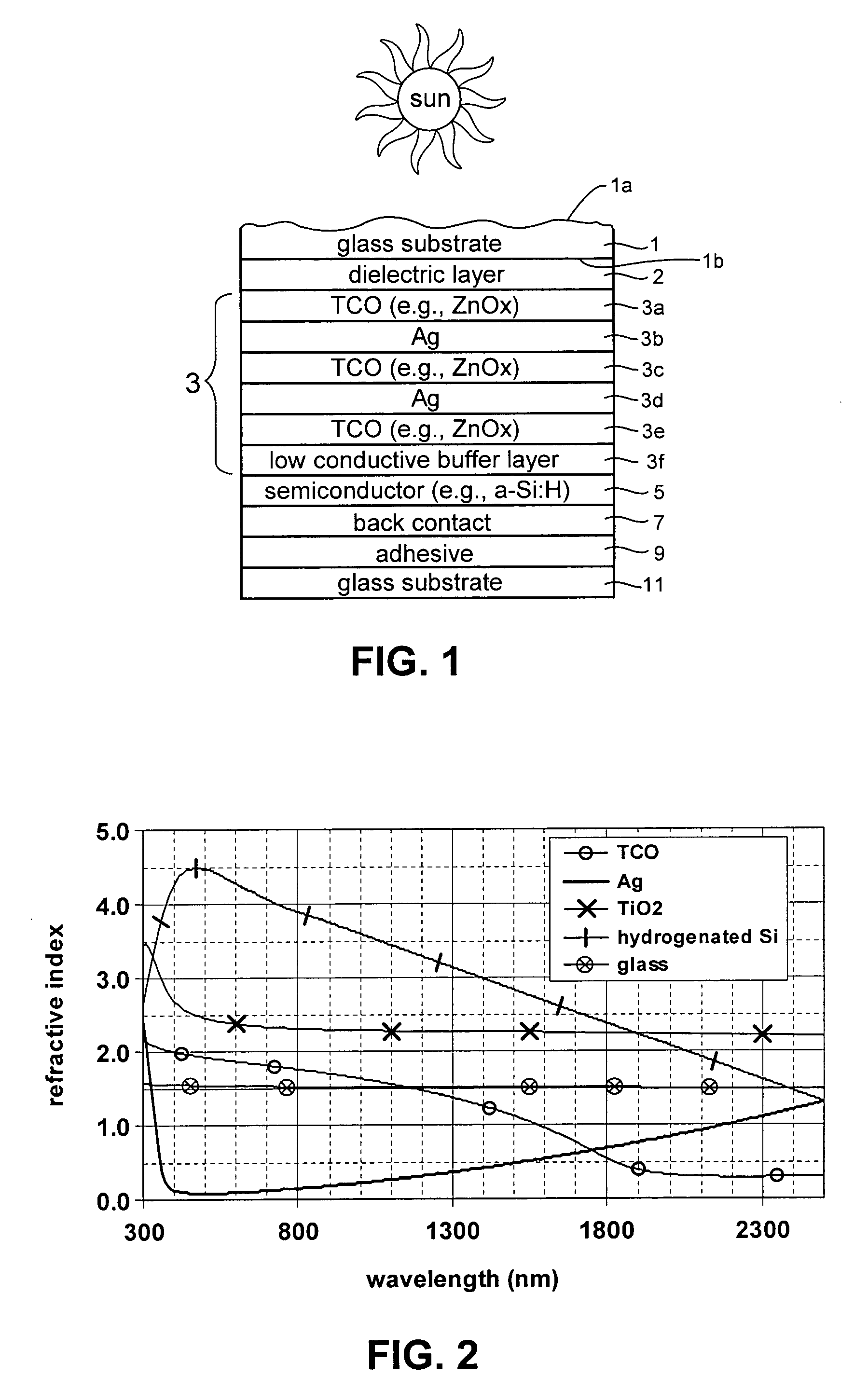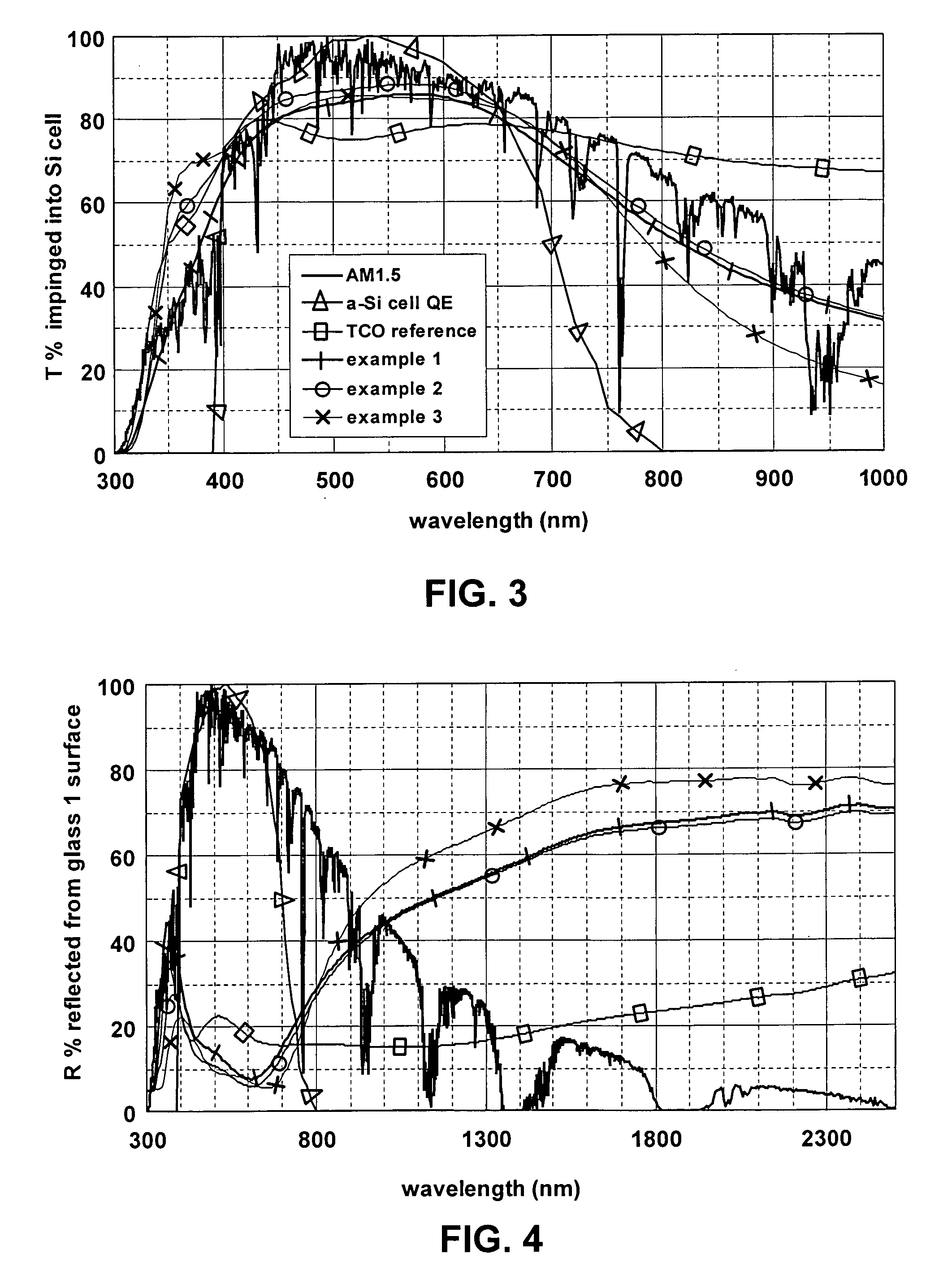Front electrode for use in photovoltaic device and method of making same
a photovoltaic device and front electrode technology, applied in the direction of coatings, layered products, chemical instruments and processes, etc., can solve the problems of reducing the output power of the photovoltaic device, reducing and only having such conventional tco front electrodes, so as to reduce the reflection loss of incident solar flux, reduce visible light reflection, and increase the absorption of photons
- Summary
- Abstract
- Description
- Claims
- Application Information
AI Technical Summary
Benefits of technology
Problems solved by technology
Method used
Image
Examples
Embodiment Construction
of this invention (having a textured front surface of the front glass substrate) versus comparative examples; this shows that the Example 4 of this invention realized increased transmission in the approximately 500-700 nm wavelength range and thus increased photovoltaic module output power, compared to the comparative example without the etched front surface (x dotted line) and the comparative example of the conventional TCO superstrate (o solid line).
DETAILED DESCRIPTION OF EXAMPLE EMBODIMENTS OF THE INVENTION
[0032]Referring now more particularly to the figures in which like reference numerals refer to like parts / layers in the several views.
[0033]Photovoltaic devices such as solar cells convert solar radiation into usable electrical energy. The energy conversion occurs typically as the result of the photovoltaic effect. Solar radiation (e.g., sunlight) impinging on a photovoltaic device and absorbed by an active region of semiconductor material (e.g., a semiconductor film including...
PUM
| Property | Measurement | Unit |
|---|---|---|
| surface roughness | aaaaa | aaaaa |
| surface roughness | aaaaa | aaaaa |
| refractive index | aaaaa | aaaaa |
Abstract
Description
Claims
Application Information
 Login to View More
Login to View More - R&D
- Intellectual Property
- Life Sciences
- Materials
- Tech Scout
- Unparalleled Data Quality
- Higher Quality Content
- 60% Fewer Hallucinations
Browse by: Latest US Patents, China's latest patents, Technical Efficacy Thesaurus, Application Domain, Technology Topic, Popular Technical Reports.
© 2025 PatSnap. All rights reserved.Legal|Privacy policy|Modern Slavery Act Transparency Statement|Sitemap|About US| Contact US: help@patsnap.com



